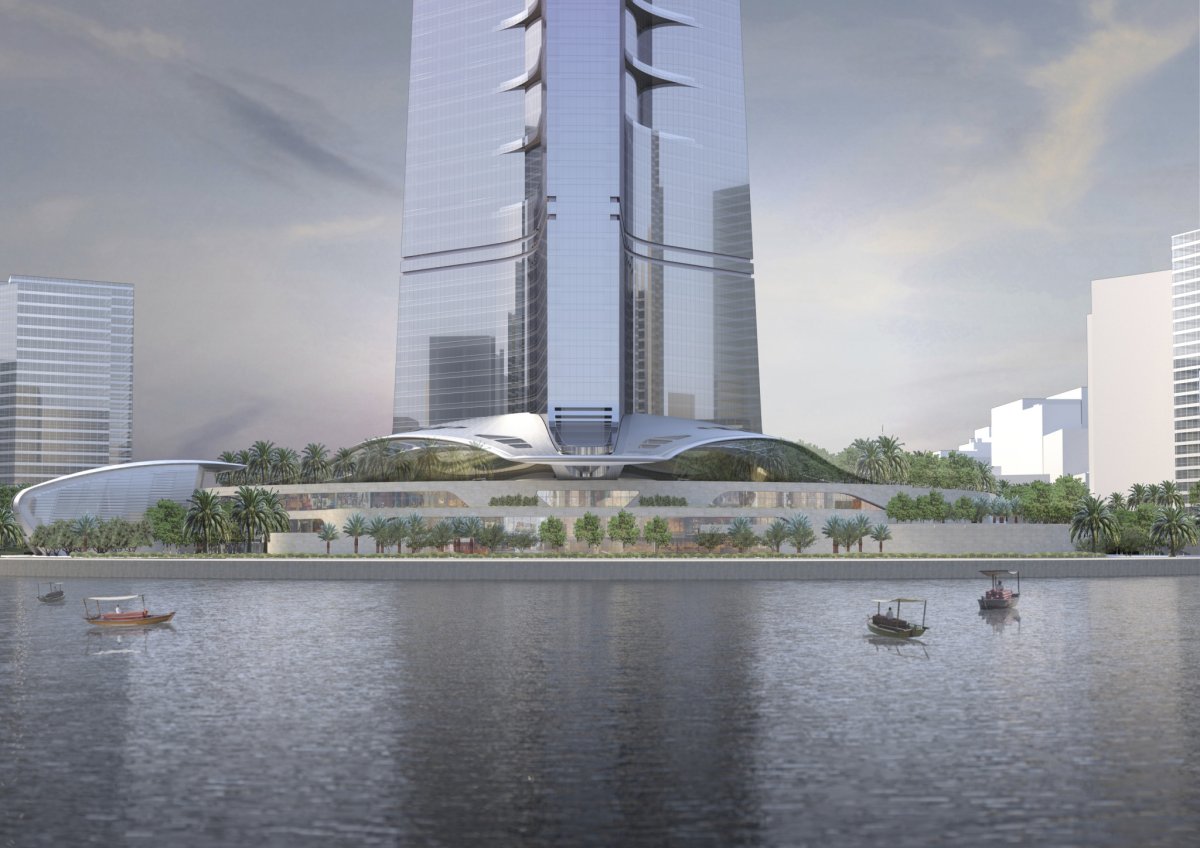Uncommon Knowledge
Newsweek is committed to challenging conventional wisdom and finding connections in the search for common ground.

After years of delays, construction on the Jeddah Tower, set to become the world’s tallest building, resumed this week in Saudi Arabia.
Formerly known as Kingdom Tower, the skyscraper will, once completed, stand at 3,280 feet — becoming the first structure in history to reach over 1 kilometer in height. It’s part of an ambitious $20 billion economic development near the Red Sea, one of several megaprojects currently underway in the kingdom.
Jeddah Tower, a $1.2 billion venture designed by Chicago-based Adrian Smith + Gordon Gill Architecture, will encompass a mix of luxury hotels, offices, short-term rentals and condominiums.
The architecture firm confirmed to Newsweek on Thursday that construction is back on track.
Jeddah Tower derives its name from its location in Jeddah, a major port city along the Red Sea and Saudi Arabia’s second-most populous city.
Initiated in 2013, the construction was stopped in 2018 when its primary contractor, the Binladin Group, was removed following the arrest of its president Bakr bin Laden, step brother of Osama bin Laden as part of anti-corruption purge initiated by Saudi Crown Prince Mohammed bin Salman. (The al-Qaeda leader was kicked out of the family business after the 1993 World Trade Center bombing). The project was further delayed by the COVID-19 pandemic.
When construction was halted six years ago, approximately one-third of the construction had been completed, according to Architectural Digest. The building’s incomplete skeleton has loomed over Jeddah ever since.
Upon completion, Jeddah Tower will eclipse its Gulf neighbor Dubai’s Burj Khalifa, current holder of the world’s tallest building title, by more than 500 feet. It will stand twice as high as New York’s Empire State Building and eleven times the height of the Statue of Liberty.
The skyscraper will feature the world’s largest observatory accessible to the public, with an advanced elevator system comprising 59 lifts that will transport visitors at speeds of up to 33 feet-per-second.

The tower’s unique “three-petal footprint” optimizes residential space and window views while its tapered form significantly reduces wind resistance at high altitudes, according to the architect.
The firm anticipates the structure’s completion within the next four to five years, with a new contractor set to be announced in the coming weeks.

The project is part of the broader Saudi Vision 2030 initiative, which aims to diversify Saudi Arabia’s economy beyond oil and enhance sectors such as health, education, and tourism.
The ambitious plan seeks to boost Saudi Arabia’s global image, positioning it as a major economic player on the world stage in time for the 2034 FIFA World Cup, set to be hosted at locations across the kingdom.
Newsweek is committed to challenging conventional wisdom and finding connections in the search for common ground.
Newsweek is committed to challenging conventional wisdom and finding connections in the search for common ground.